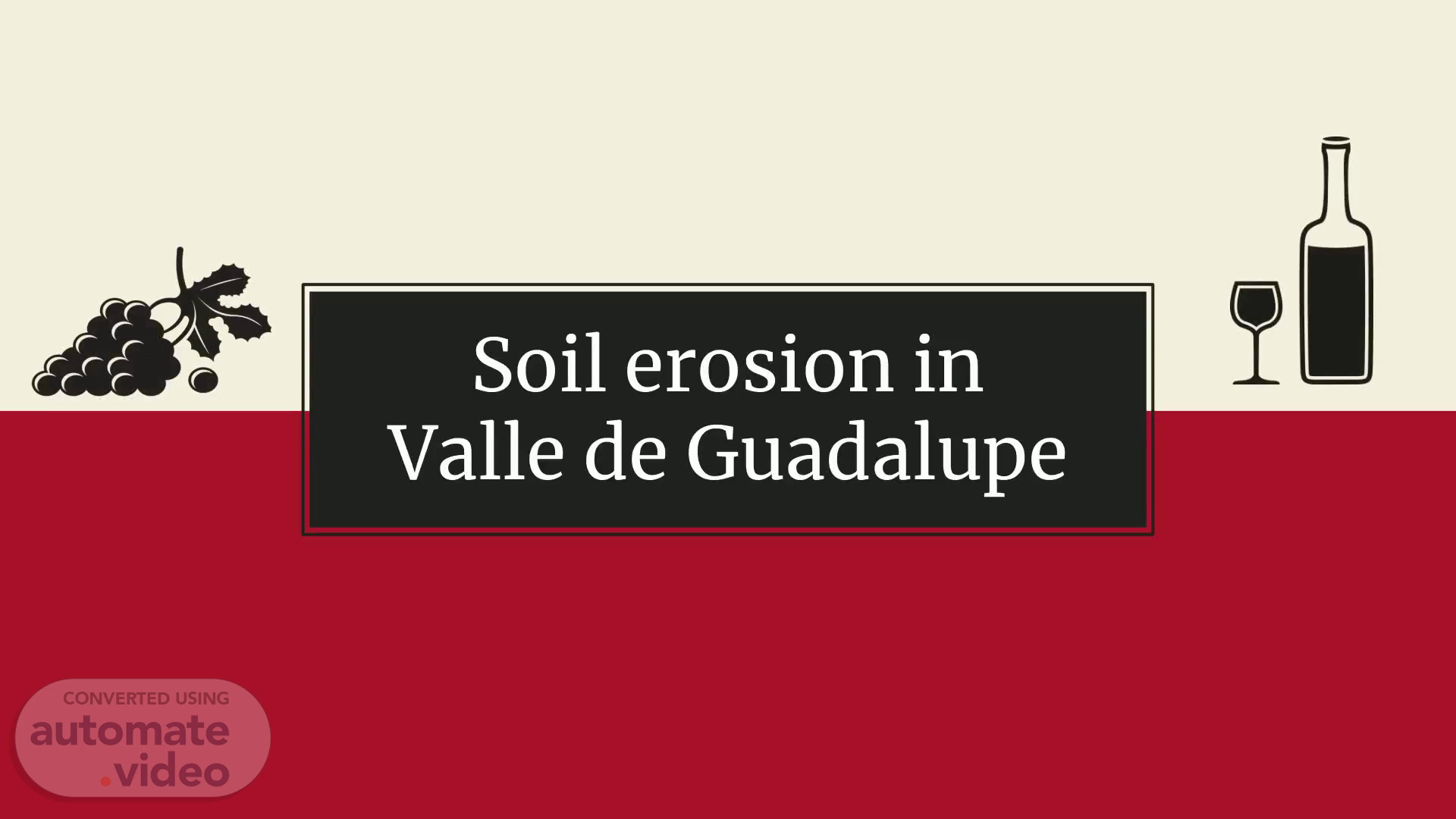Page 1 (0s)
. . Soil erosion in. Valle de Guadalupe. . .
Page 2 (8s)
. . About this template Overview. CASE STUDY AREA.
Page 3 (39s)
. . 1.. Case study area. Valle de Guadalupe. Ensenada, Baja California. México..
Page 4 (48s)
. . Location. 4. . . .
Page 5 (56s)
. . geographical coordinates. 32º 00 'and 32º 08' of North Latitude and 116º 30 'and 116º42' of West Longitude.
Page 6 (1m 20s)
. . 6. Pictures taken at Finca La Carrodilla, Mexico's first certified organic vineyard.
Page 7 (1m 33s)
. . Climate. ◉ Desert climate: dry air and low precipitation.
Page 8 (2m 3s)
. . “. Most large deserts of the world occur at. latitude 20º-35º… as a result of the.
Page 9 (2m 15s)
Climate Phytogeography, vegetation and ecology: ◉ Mediterranean (southern part of California Floristic Province) rainfall period in winter and spring with dry summers ○ Chaparral: evergreen community of sclerophyllous shrubs, frequently associated with infertile, coarse-textured soils. ○ Coastal sage scrub: dominant species are aromatic, facultative, drought deciduous, shallow rooted shrubs, adapted to survive in the low precipitation but foggy coasts. (Rebman, Roberts & Ezcurra, 2012)9.
Page 10 (2m 35s)
. . TYPE OF SOILS Regosol: sandy soil with no distinct layers, they are clear and quite similar to the underlying rock when they are not deep. Lithosol: Rocky, thick textured. This soils are shallow and their capacity for agricultural use it is conditioned to its depth and stonyness..
Page 11 (3m 8s)
. . SOIL THREAT. The destruction of top soil for economic.
Page 12 (3m 17s)
. . In two or three columns. BACKGROUND. Agriculture has been the main economic activity of this valley from the first settlements..
Page 13 (3m 41s)
. . ON - SITE EFFECTS ◉ Desertification of soils. ◉ Loss of soil quality.
Page 14 (4m 0s)
. . Deepening into the effects. Water scarcity has been a serious issue in the Peninsula. Ground water deposits are currently over exploited. It is an essential resource in the production of crops and all the economic activities taking place in the area. The rapid development of agronomical, commercial and residential projects requires a higher demand of water..
Page 15 (4m 27s)
. . More land is cleared of its. vegetation cover.
Page 16 (4m 42s)
. . Destruction of landscape for construction.. Sealing of the soil. More water usage..
Page 17 (4m 57s)
. . This would all lead to the. BREAKDOWN. of the ecosystem as it would no longer be able to provide the resources necessary for the economic activities taking.
Page 18 (5m 9s)
. . How to. prevent. this from. happening. ?. 18.
Page 19 (5m 16s)
. . Use charts to explain your ideas. Tourism. Industry.
Page 20 (5m 30s)
. . 20. 1 3 5. 6 4 2. Avoiding the use of toxic agrochemicals..
Page 21 (5m 49s)
. . Let’s review some concepts. ORGANIC. AGRICULTURE.
Page 22 (6m 24s)
. . “. By transitioning into this simple. practices it is possible to preserve the natural and cultural heritage of the region. Ensuring the availability of.
Page 23 (6m 37s)
. . Thank you. For watching and caring for soils for life !.
Page 24 (6m 45s)
. . References. ◉ Rebman, J., Roberts, N., & Ezcurra, E. (2012). Baja California plant field guide. San Diego, CA: San Diego Natural History Museum..
